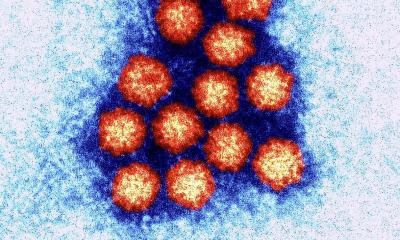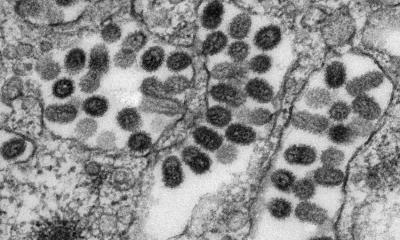Shunning the flu vaccine
Although receding since late March, the 2012-13 seasonal flu epidemic in metropolitan France, appears to be the longest in some 30 years, even if it did not strike the highest numbers, according to the monitoring network Sentinelles-Inserm.

The epidemic affected 3,563,000 persons – who had 39°C+ fever and had to see a doctor – over a 13-week period, according to Sentinelle’s head Dr Thierry Blanchon. ‘In some 30 years it’s the longest epidemic episode, since our network began to monitor the influenza impact.’ However, although a major seasonal epidemic episode, some previous outbreaks have affected more people – in 1998-89 3.5 millions cases were recorded, and in 1989-1990 flu affected 4.6 million people in 11 weeks.’
All the figures do not take into account the pandemic A/H 1N1 flu, which had its own characteristics, among which an exceptional length of 16 weeks, and specific monitoring procedures.The Sentinelle doctors record flu symptoms such as a sudden fever peak to 39° C+, together with muscle stiffness and respiratory discomfort. The Grog (regional groups for flu monitoring) stressed that, although the flu epidemic was weakening in mid-March, the flu virus remained ‘active’. ‘Since the outbreak, the A and B flu viruses (H1N1 and H3N2) have been circulating in a quasiequal fashion’, Grog observed. The groups measure the flu varieties with fevers including those under than 39°C. It estimated that this year more than 10 million persons had to visit a GP or a paediatrician since the outbreak of the flu epidemic.
Since November 2012, according to Grog, 664 very severe cases put patients in hospital intensive care units. 98 patients died (from five months to 88 years old) according to the national Institut de Veille Sanitaire (InVS). 72% of these patients had been infected by the A virus.
Disaffection grows against seasonal flu vaccine
‘We need to save the seasonal flu vaccine’… it could be a message from the GEIG (Groupe d’expertise et d’information sur la grippe), which recently held its 25th congress. Experts expressed dismay at the insufficient and declining flu vaccine uptake, especially among people at high-risk, as well as healthcare workers, two groups receiving the vaccine free. In winter 2011-12 uptake dropped significantly among pregnant women, people over 65, and those suffering chronic diseases such as respiratory, cardiac or kidney pathologies, blood and hepatic pathologies, diabetes or immunodeficiency. Specifically, only 43 % of people below 65 suffering from chronic obstructive bronchopneumopathy had the flu vaccination last year as opposed to 68% the year before.
A 75 % uptake among over 65-year-olds and high-risk patients would be needed to reduce the flu impact significantly on this particular population. The GEIG stresses that ‘…last winter, the mortality rate was especially important during the cold wave and the flu epidemic’ with a low vaccination rate in the background. ‘Almost 6,000 died between February 6 and March 18, a toll 3% higher than the year before’. As for healthcare workers, in 2011 only 25% were vaccinated, 7% less than in 2010. Moreover, 24% who had received vaccination before, stopped doing it, and 51% of healthcare staff have never been immunised against influenza. They mention ‘apprehension about injections’ and are also sceptical about the vaccine’s efficiency and safety.
In October 2012, Novartis flu vaccines were temporarily suspended in several countries, pending tests for possible side-effects. This was a ‘precautionary measure’, but it came after the disastrous scam of the swine flU vaccination in 2010, when 94 million Tamiflu doses were uselessly ordered by the then Minister of Health Roselyne Bachelot.
22.05.2013





